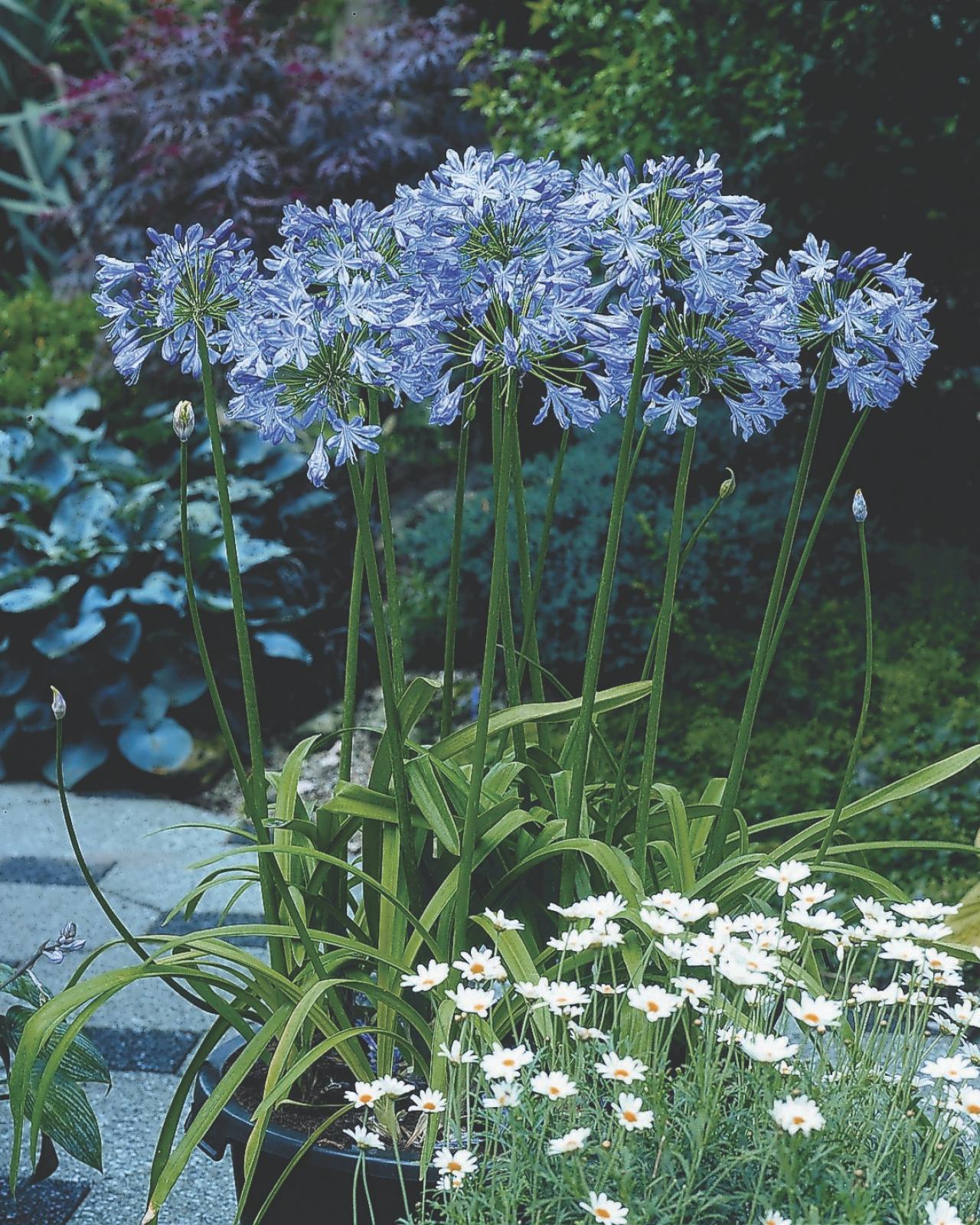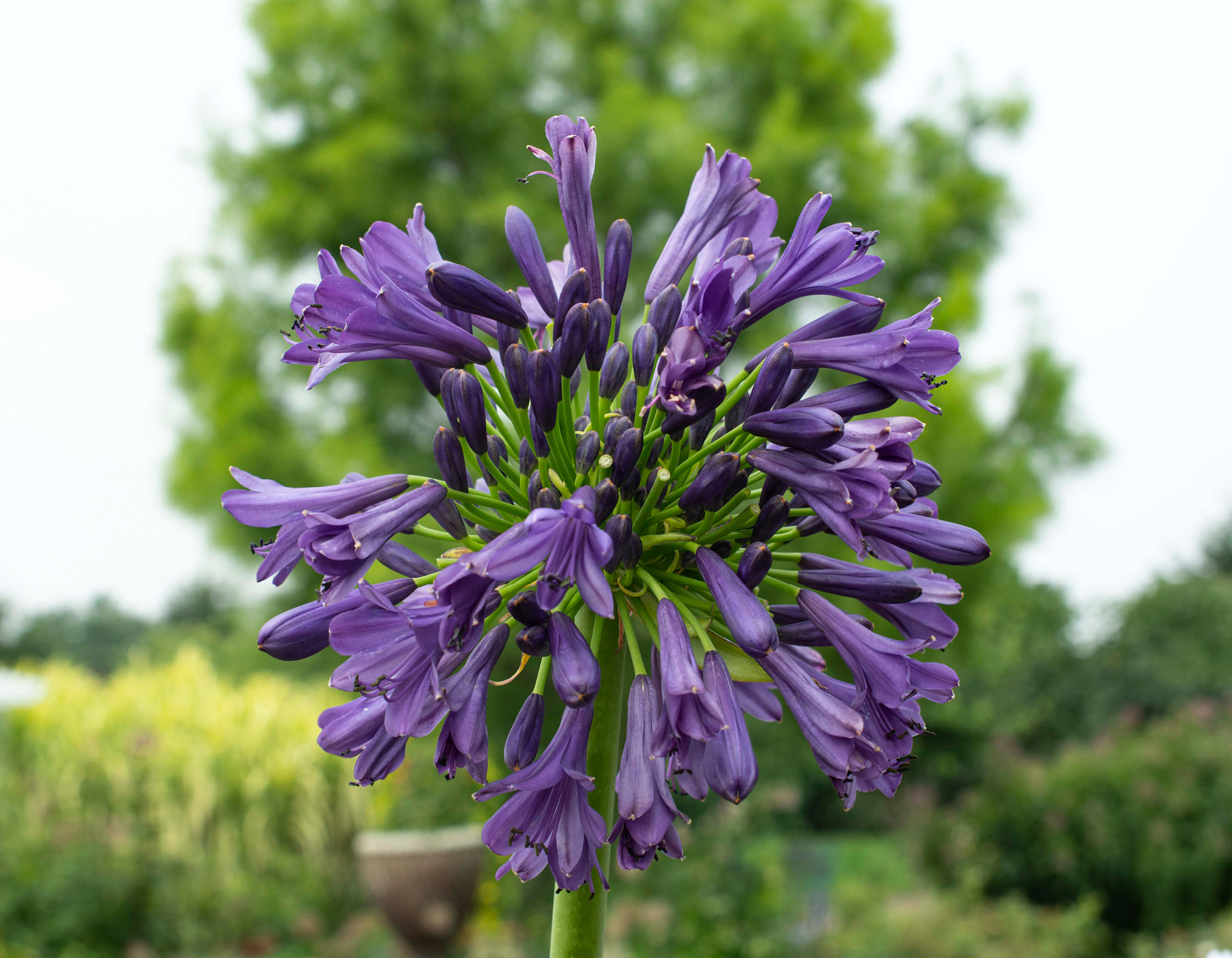Agapanthus Proliferation: Tips for Expanding Your Plant Collection
Agapanthus Proliferation: Tips for Expanding Your Plant Collection
Blog Article
Grasping the Art of Agapanthus Treatment: Crucial Steps for Healthy And Balanced Growth and Lively Blossoms
In the world of horticulture, the cultivation of agapanthus stands as a fulfilling endeavor for those who seek to nurture these stylish flowering plants. With their striking blooms and stylish vegetation, agapanthus has actually recorded the focus of garden enthusiasts worldwide. Nevertheless, achieving optimal growth and vivid blooms needs a nuanced method that incorporates numerous vital steps. From selecting the appropriate selection to mastering trimming strategies, the trip in the direction of growing prospering agapanthus plants is diverse and holds the key to opening the complete capacity of these organic gems.

Picking the Right Agapanthus Variety

When picking the right Agapanthus range for your garden, think about variables such as environment suitability, flower color, and growth routine. Agapanthus, generally called Lily of the Nile or African lily, comes in a range of shades varying from tones of blue and purple to white. Select a flower shade that enhances your existing garden combination to produce an unified landscape. Additionally, consider the climate in your area to make sure the Agapanthus range you choose can flourish in your particular conditions. Some varieties are more tolerant of cold temperature levels, while others prefer warmer climates. Understanding the development behavior of different Agapanthus varieties is crucial for correct positioning within your yard. Some ranges have a clumping growth behavior, ideal for borders or containers, while others have an even more dispersing nature, ideal for ground cover or mass growings. By meticulously reviewing these variables, you can choose the perfect Agapanthus selection to improve the appeal of your yard.
Suitable Growing Problems
Considering the ideal ecological demands is essential for successful Agapanthus growing. Agapanthus plants are sensitive to cool temperatures and ought to be secured from frost during winter season months.
To make certain healthy and balanced growth and lively blooms, plant Agapanthus light bulbs at a deepness of regarding 2-4 inches and area them 8-12 inches apart. Adding natural matter, such as garden compost, to the soil can enhance drain and fertility, advertising robust origin growth. Mulching around the base of the plants assists preserve moisture and subdues weed growth. Regular watering is important, particularly throughout the growing period, to keep the soil constantly moist yet not soaked.
Watering and Feeding Tips
Keeping correct moisture levels and offering necessary nutrients are crucial elements in the care regimen for Agapanthus plants. It is critical to strike an equilibrium when it comes to sprinkling Agapanthus. If overwatered, these plants like consistently wet soil but are susceptible to root rot. During the growing period, water deeply once a week, making sure the dirt is well-draining to stop waterlogging. In hotter climates or throughout periods of drought, even more frequent watering may be required to keep the dirt equally damp. Nonetheless, decrease watering in the winter to prevent waterlogged see post problems.
Fertilizing Agapanthus is essential for promoting healthy development and respected blooms. Apply a well balanced plant food, such as a 10-10-10 formula, in the very early springtime as new development emerges. Repeat this application every 6-8 weeks throughout the growing period. Prevent too much fertilization, as it can cause rich foliage at the expense of blooms. Always adhere to the producer's directions for proper dilution and application approaches. By adhering to these watering and fertilizing ideas, you can ensure your Agapanthus plants prosper and generate vivid, resilient blossoms.
Pruning Techniques for Agapanthus
Trimming Agapanthus plants at the suitable times and with correct strategies is vital for maintaining read what he said their health and advertising optimal growth and blooming. The suitable time to prune Agapanthus is in late winter or very early spring prior to brand-new development arises.
Deadheading invested blossoms can also reroute the plant's energy into producing more flowers instead than setting seeds. If you desire to accumulate seeds for proliferation, leave some blossoms to completely dry and mature on the plant.
Keep in mind to utilize clean, sharp devices to make specific cuts and decrease the danger of introducing illness. Agapanthus. Normal trimming will certainly assist keep your Agapanthus looking cool and healthy and balanced while making certain an abundant screen of stunning blossoms
Taking Care Of Common Insects and Conditions
After making certain appropriate trimming techniques for Agapanthus, it is essential to address common insects and diseases that can affect the health and vigor of these plants. One typical parasite that affects Agapanthus is the Agapanthus gall midge.
An additional typical issue is fungal leaf spot, which presents as dark sores on the fallen leaves. To stop fungal conditions, ensure article source good air blood circulation around the plants, prevent overhead watering, and remove any type of infected fallen leaves quickly. Additionally, Agapanthus plants can experience origin rot if they are planted in inadequately draining dirt. To stop this, plant Agapanthus in well-draining soil and stay clear of overwatering. By being alert and taking prompt activity against parasites and illness, you can aid your Agapanthus plants flourish and produce vibrant blossoms.

Conclusion
Finally, mastering the art of agapanthus care involves picking the appropriate selection, giving ideal planting problems, proper watering and fertilizing, appropriate pruning techniques, and addressing usual bugs and illness. By complying with these crucial steps, you can make certain healthy and balanced growth and vivid blossoms for your agapanthus plants. Bear in mind to frequently keep an eye on and preserve your plants to promote their total well-being and durability.
To ensure healthy development and dynamic blossoms, plant Agapanthus light bulbs at a deepness of concerning 2-4 inches and area them 8-12 inches apart. By complying with these watering and fertilizing ideas, you can ensure your Agapanthus plants flourish and create dynamic, long-lasting flowers.
One usual bug that impacts Agapanthus is the Agapanthus gall midge. In addition, Agapanthus plants can experience from origin rot if they are planted in improperly draining dirt. By following these essential steps, you can guarantee healthy and balanced growth and vibrant flowers for your agapanthus plants.
Report this page